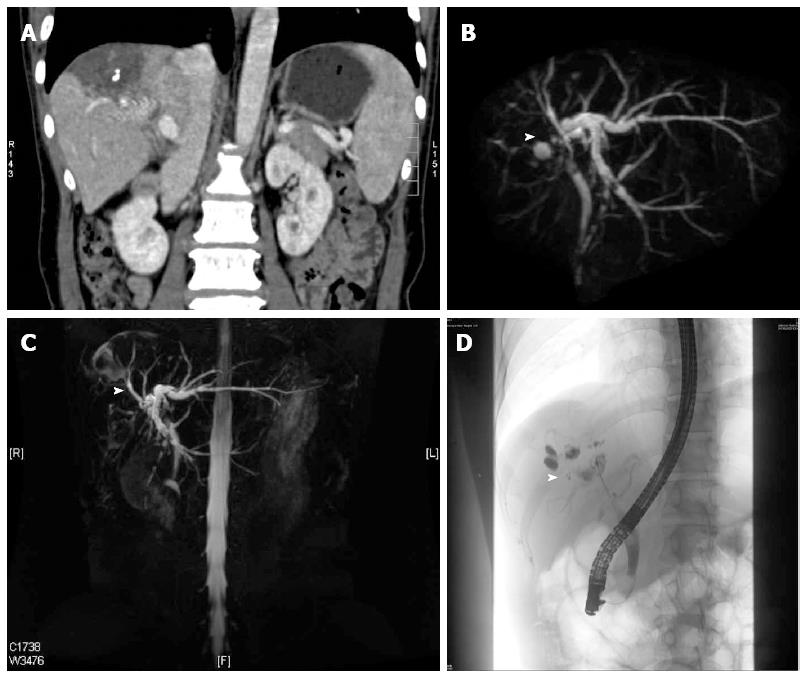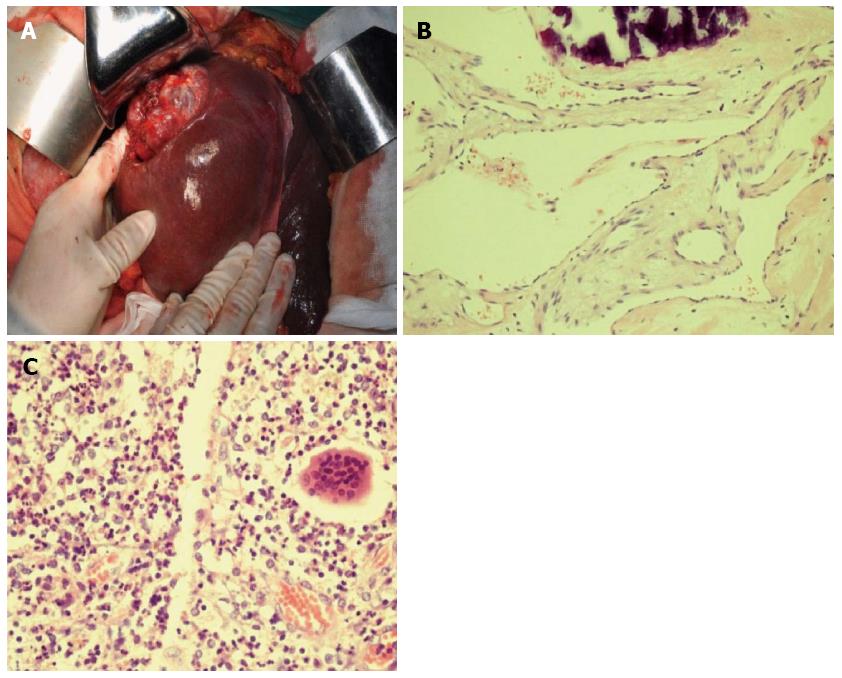Copyright
©2014 Baishideng Publishing Group Inc.
World J Gastroenterol. Dec 14, 2014; 20(46): 17680-17685
Published online Dec 14, 2014. doi: 10.3748/wjg.v20.i46.17680
Published online Dec 14, 2014. doi: 10.3748/wjg.v20.i46.17680
Figure 1 Upper abdominal triple-phase contrast-enhanced computed tomography.
A, B: Arterial phase; C: Venous phase; D: Delayed phase. The arrowheads indicate the dilated left hepatic duct, while the right hepatic duct is radiologically invisible and the bile duct wall shows a delayed enhancement.
Figure 2 Three-dimensional reconstructed computed tomography, magnetic retrograde cholangio- pancreatography and endoscopic retrograde cholangio- pancreatography.
A: Liver three-dimensional (3D)-computed tomography scan; B, C: 3D-magnetic retrograde cholangio- pancreatography scan confirms the dilation of the left hepatic duct and the narrowing of the right hepatic duct (the white arrowheads indicate a soft tissue-like mass located at the convergence of the left and right hepatic ducts); D: Endoscopic retrograde cholangio- pancreatography shows no visualization of the hilar bile duct and poor visualization of the intrahepatic bile ducts (white arrowhead).
Figure 3 Operative exploration finding and histology.
A: Sclerotic liver cavernous hemangioma was located in the atrophic right lobe but the left lobe was remarkably hyperplastic with the displacement of the hilus towards the right side; B: Histological staining showed a pathology of liver cavernous hemangioma [hematoxylin-eosin (HE, × 200); C: Sclerosing cholangitis with complicating chronic pyogenic inflammation (HE, × 200).
- Citation: Jin S, Shi XJ, Sun XD, Wang SY, Wang GY. Sclerosing cholangitis secondary to bleomycin-iodinated embolization for liver hemangioma. World J Gastroenterol 2014; 20(46): 17680-17685
- URL: https://www.wjgnet.com/1007-9327/full/v20/i46/17680.htm
- DOI: https://dx.doi.org/10.3748/wjg.v20.i46.17680











